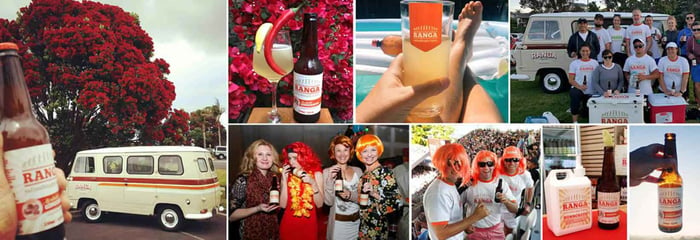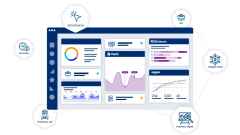
Turning on the Tap for Better Cash Flow
Featured in Food and Beverage
Ranga could get by using spreadsheets for only so long. When the brand overestimated its cash flow, the founders turned to Cin7.
It was late 2011, and their idea was to come up with a great brand for an alcoholic ginger beer, a not-so-commonplace product category at the time.
Their idea paid off. A few months later in 2012, with some hard work, research and a little kismet, Ranga landed its first trading partner, Countdown supermarkets. Ranga as of 2016 sells through more than 200 retailers, including all of New Zealand’s major supermarket chains, and is now starting to find customers in the US.
Durney, who is a full-time banker, says he and his fellow co-founders wanted to create a beer that evoked the do-it-yourself sensibility of home brewing familiar to most Kiwis.
“Everyone has a story about how their uncle was brewing ginger beer and how they blew up bottles in the hot water cupboard and there was a sticky gingery mess all over the ceiling,” Durney says, with an air of bemusement. “That was all too common, so we wanted to replicate that authentic taste.”
Ranga began by “working with a number of brewers and beer technologists” to develop a recipe that replicated the “home-brewed ginger beer taste”, contracted with Bulmer’s Harvest Cidery in Gisborne to produce the product, and proceeded from there with a focus on clever marketing and smart logistics.
Clever came naturally to Ranga whose name is a tongue-in-cheek appropriation of a slang term for “redhead,” a suitable embodiment of the company’s “Refreshingly Feisty” motto. Logistics was a slightly different story, specifically when it came to inventory management.

Maintaining the Flow
Durney isn’t the only Ranga cofounder with a day job. Bevan Wait runs a marketing research consultancy. Leon McDonald, instrumental in landing the Countdown deal, works in fast-moving consumer goods. Philip Harris is a graphic designer for an advertising firm. Durney says the partnership was “definitely about bringing our complementary skills together” to create “a business that’s scalable, and profitable at scale.”
“By going to the supermarkets first, we had to make sure that our margins and costs were managed very tightly from day one,” Durney says. “It was really important to have control and visibility of our margin and expense management.”
That shouldn’t have been too difficult for an uncomplicated supply chain. Ranga coordinated the delivery of raw materials to Harvest, which brewed and stocked the final product to be shipped directly to customers or to a small warehouse Ranga operates directly (along with a delivery van) to service Auckland, its biggest geographic market. Easy peasy.
But Ranga used spreadsheets to manage inventory, relying on suppliers’ and customers’ processes to help keep inventory up to date. This approach sufficed for profit and loss statements, but without a true balance sheet to adjust for stock levels, Ranga didn’t have an accurate view of its supply chain, occasionally leading to overestimation of cash flow.
“I’m quite handy with a spreadsheet, being a banker, so it was a pretty sophisticated spreadsheet, but at the end of the day it was just a spreadsheet,” Durney says. “It was pretty clunky and it was hard to reconcile everything. Being able to keep track of stock and purchase orders and notices was very difficult, and we actually came a bit stuck a couple of times. We ended up underestimating our expenses, which put us on a back foot.”
Accurate cash flow accounting is one of the most important things for a small company like Ranga to manage. Durney and his partners realized that to keep up with month-to-month operating expenses, they needed to get their supply chain visibility in order. They started testing solutions that worked with their accounting package, Xero.
Last Stop: Cin7
Ranga opted for Cin7 in part because it doesn’t force its users to “journal your way” out of an accounting error, Durney says. Because Cin7 allows for Inventory data to be corrected on the fly instead of counterbalanced Ranga has the information it needs for demand planning and forecasting, which helps the company get a grip of its cash flow.
“If you have a lot of journal entries, it becomes very difficult to realize the data and get any good insights out of them,” Durney says. “My preference is to go back and actually correct the data, rather than counter with a journal. Some of the systems we tried wouldn’t let us do it that way.”
While the company is still small, it is growing apace with a 60% year-over-year sales increase from 2014 to 2015.
Ultimately, the move away from spreadsheets liberates Ranga’s directors to focus on continued growth.
“For a company our size, a lot of the game is about time,” Durney says. “Spreadsheets will give you certain efficiencies, but ultimately you want to try to keep your directors and account keepers working on value-added things rather than processing.”



